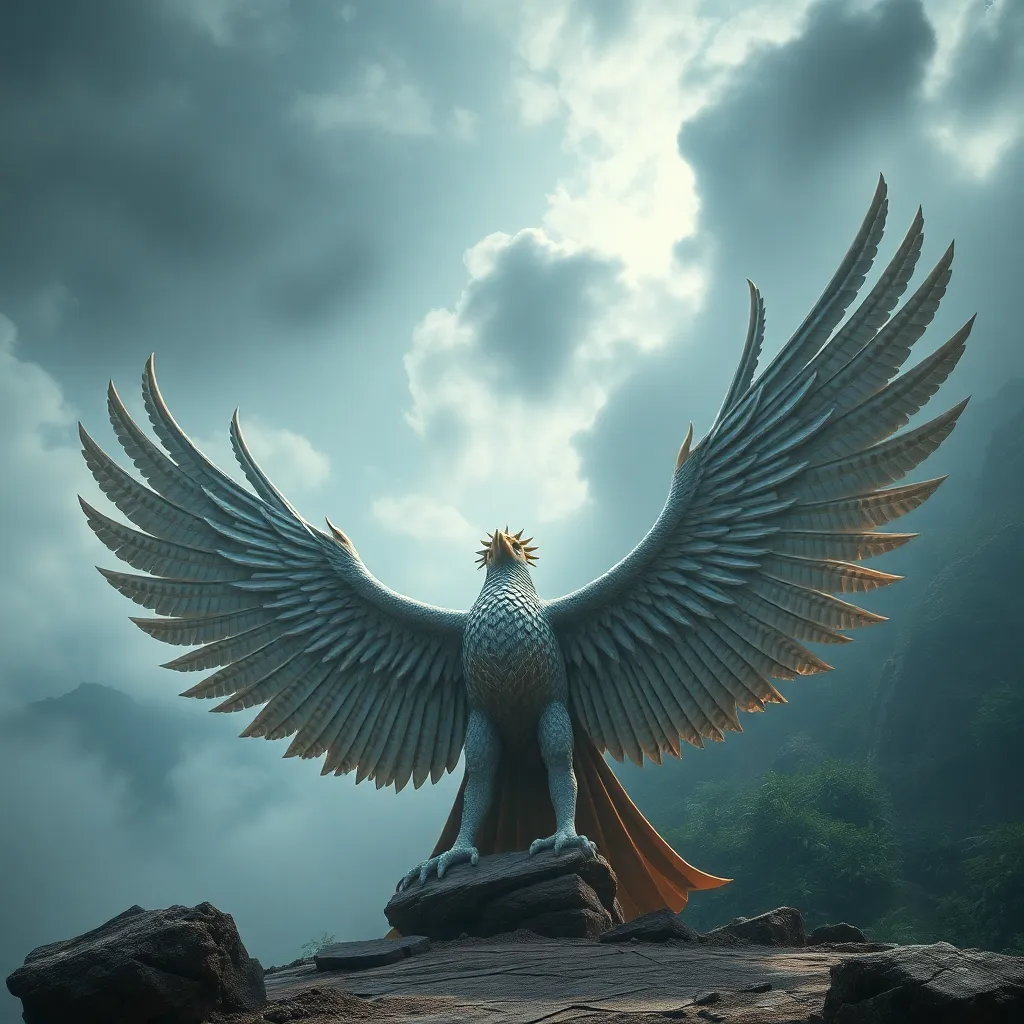Beyond the Myths: Exploring the Real-World Inspiration for the Garuda Legend
I. Introduction
The Garuda legend is a prominent and powerful myth that transcends various cultures, particularly in Hinduism and Buddhism. This mythical bird, often depicted as a hybrid of man and eagle, is celebrated for its strength, speed, and ability to traverse the skies. Across different cultures, Garuda symbolizes a protector and a vehicle for deities, embodying the duality of power and benevolence. However, the origins and inspirations behind this timeless figure are often shrouded in mystery.
This article aims to uncover the real-world inspirations behind the Garuda myth by exploring its historical origins, cultural representations, and connections to nature, as well as its psychological and societal implications. By delving into these aspects, we can gain a deeper understanding of how myths like Garuda shape cultural heritage and identity.
II. The Origins of the Garuda Myth
A. Historical context: Ancient texts and scriptures
The Garuda myth finds its roots in ancient Indian scriptures, primarily in texts such as the Mahabharata and the Vishnu Purana. In these texts, Garuda is portrayed as the mount of Lord Vishnu, one of the principal deities in Hinduism. His birth story, which describes his emergence from an egg and his fierce battle against the serpents, highlights his role as a heroic figure tasked with protecting the divine and restoring order.
B. The significance of Garuda in Hindu and Buddhist traditions
In Hinduism, Garuda is revered as a symbol of speed, power, and loyalty. He represents the victory of good over evil and is often invoked for protection. In Buddhism, Garuda is also significant, often seen as a protector of the dharma and a symbol of enlightenment. The myth has thus been adapted and integrated into various religious narratives, reinforcing its importance across cultures.
III. Cultural Representations of Garuda
A. Garuda in art and sculpture across different regions
Garuda’s striking imagery has inspired countless artists and sculptors throughout history. From intricate temple carvings in India to majestic statues in Indonesia, Garuda is depicted in various artistic forms:
- Indian Temples: Garuda is often depicted in temple carvings, symbolizing protection from evil.
- Indonesian Culture: In Indonesia, Garuda is a national symbol, prominently featured in the national emblem, representing unity and strength.
- Southeast Asian Art: Garuda figures are prevalent in Buddhist art across Thailand, Cambodia, and Myanmar, illustrating the cultural exchange of the myth.
B. Variations of the Garuda myth in Southeast Asian cultures
In Southeast Asia, the Garuda myth has evolved, adapting to local cultures and beliefs. For instance:
- Thailand: Garuda is known as “Krut,” often depicted in royal insignia and associated with the kingship.
- Bali: In Bali, Garuda is a prominent cultural figure, often featured in traditional dances and ceremonies.
- Myanmar: Here, Garuda is revered as a protector against evil spirits, appearing in various religious iconography.
IV. Real-World Animals and Their Influence
A. The eagle and other avian species as possible inspirations
The physical characteristics of Garuda closely resemble those of eagles and other large birds of prey. The majestic presence and hunting prowess of these birds may have inspired the depiction of Garuda as a powerful and dominant figure in the skies. The eagle, in particular, has long been associated with various symbolic meanings in different cultures:
- Strength: Eagles are often seen as symbols of courage and strength.
- Vision: Their keen eyesight symbolizes clarity and foresight.
- Freedom: Eagles’ ability to soar high represents freedom and liberation.
B. Symbolism of birds in ancient civilizations
Birds have held significant symbolic meanings in numerous ancient civilizations. They have been viewed as messengers of the gods, symbols of the soul, and representations of the divine. In this context, Garuda serves as a representation of both earthly and spiritual realms, bridging the gap between humanity and the divine.
V. The Role of Nature and Geography
A. The influence of the Indian subcontinent’s landscape on the Garuda myth
The geographical features of the Indian subcontinent, particularly its vast skies and diverse ecosystems, have likely influenced the Garuda myth. The awe-inspiring landscapes, from towering mountains to expansive plains, provide a fitting backdrop for the legend of a mighty bird capable of soaring through the heavens.
B. Connections to local wildlife and ecosystems
In addition to the eagle, other avian species found in the region, such as hawks and vultures, may have contributed to the formation of the Garuda narrative. The natural behaviors and characteristics of these birds could have been observed by ancient peoples, embedding their traits into the myth of Garuda.
VI. Psychological and Societal Interpretations
A. Garuda as a symbol of power and protection in society
Throughout history, Garuda has been regarded as a powerful protector, embodying the hopes and aspirations of communities. This mythological figure often symbolizes the strength of the people and their resilience against adversities. As a guardian, Garuda is invoked in various rituals and ceremonies, reinforcing social cohesion and collective identity.
B. The myth’s role in shaping cultural identity and values
The Garuda legend transcends mere storytelling; it embodies cultural values such as loyalty, bravery, and the triumph of good over evil. Its narratives reflect the ideals and moral lessons that societies strive to uphold, serving as a source of inspiration and a means of cultural preservation.
VII. Modern Adaptations and Reinterpretations
A. Contemporary representations of Garuda in media and literature
In contemporary culture, the Garuda myth continues to inspire various forms of media, including literature, film, and art. Modern adaptations reinterpret the myth, often blending traditional elements with contemporary themes, thereby keeping the legend alive for new generations.
B. The enduring legacy of the Garuda myth in modern culture
The legacy of Garuda is evident in its presence in modern symbols, logos, and even in the names of organizations. As a cultural icon, Garuda represents more than just a myth; it embodies a sense of national pride and cultural identity for many communities across Asia.
VIII. Conclusion
In summary, the Garuda legend is a rich tapestry woven from historical, cultural, and natural threads. Its origins in ancient texts and its varying representations across cultures highlight the complexities of this myth. Influences from real-world animals, the environment, and societal values have shaped its narrative, allowing it to endure through the ages.
Understanding the real-world inspirations behind the Garuda myth provides valuable insights into the cultural heritage of the regions that revere it. Myths like Garuda not only tell stories of the past but also continue to influence contemporary society, reflecting the enduring power of cultural narratives in shaping identity and values.



